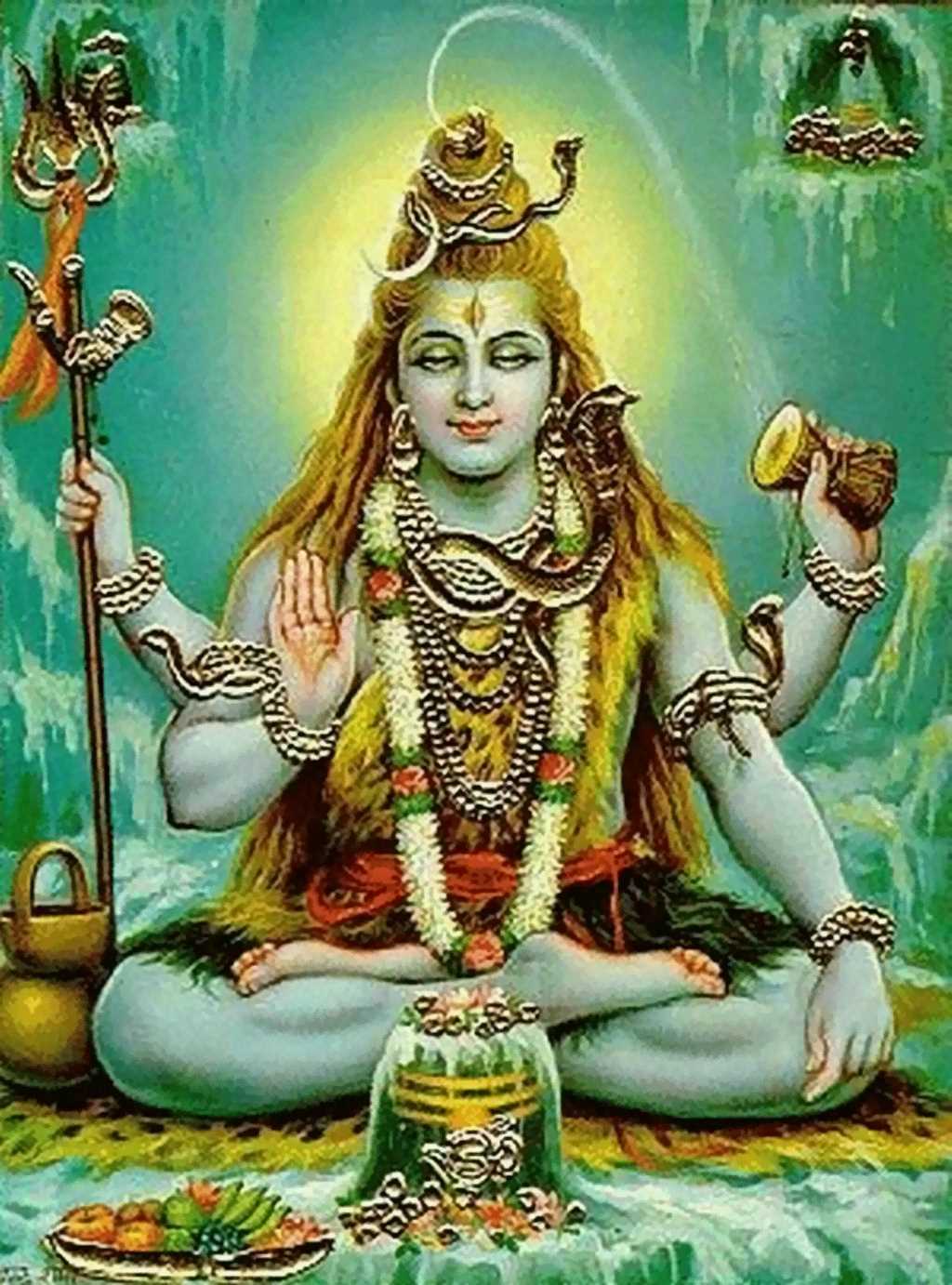
Lord Shiva is regarded as a supreme and divine god in Hindu Mythology. He is also called “Mahadev” - the greatest god by his followers. He forms a part of the Trimurti group, with Lord Brahma is “The Creator” of the universe, Lord Vishnu is “The Preserver” of the universe and Lord Shiva, “The Destroyer” of the universe. Shiva names mean the auspicious one. He is considered the supreme god in Shaivism, one of the four major sects in Hinduism. It is believed in Hindu Mythology that the universe regenerates in cycles and Shiva protects the universe and destroys it towards its end so that Lord Brahma can create it again. So Lord Shiva is the world and he is the god beyond time too.
Lord Shiva History
One day the creator and preserver of the universe – Lord Brahma and Lord Vishnu were having an argument over who was more powerful. Suddenly a big blazing pillar came out of nowhere whose roots and branches went right into the earth and sky. To see where the pillar starts and ends, Lord Brahma became a goose and flew up into the sky and Lord Vishnu became a boar and dug deep into the earth to find the pillar’s origin. After an unsuccessful attempt, they both came back to the original place to find Lord Shiva manifesting in front of them. This made both the Lords realize that there was a third mightier power ruling over the universe and this is how Lord Shiva came into existence.
About Lord Shiva
This Hindu God is seen in many aspects and forms throughout Hindu Mythology. He is an ascetic who wears tiger or leopard skin around his waist while his upper body is bare and smeared in ash. He wears a garland of skulls and beads as he also the lord of evil spirits, demons and ghosts and a master of beggars. There is a snake around his neck whose species he honored because he took plight on their condition. His arms are adorned by rudraksha bead bracelets. His long strands are matted and tied in a knot and crescent moon adorns his hair. It is believed that Shiva changes the size of the moon in a 15-day cycle. River Ganga flows from the top knot of God Shiv’s top knot. He is said to have a third eye in the middle of the forehead which is also opened when he is very angry and wants to destroy evil. He has a blue throat as he drank the poison Halahala, which came up while the lords and demons were churning the sea for nectar. He thus spread the poison for spreading and got his name, “Neelkanth”- the blue throat. He sits cross-legged on a tiger skin. Shiva has four hands. In one hand he holds his Trishul, the Pinaka which has a drum tied to it. In another hand, he holds rudraksha rosemary or a club. In other hands, he holds a conch shell and one of his hands is raised in a gesture of blessings or protection towards his devotees.
Lord Shiva is also the Lord of Yogi’s. He spent years in Mouth Khailash meditating and in a state of trance. The practices and theory and Yoga are said to find their origin from the Hindu God Shiva. He is said to have five faces which correspond with his tasks in the universe also called the panchakriya. They are creation, establishment, destruction, oblivion and that of grace. These faces lead to the creation of the scared syllable “Om,” which is widely used in meditation and yoga practices today. His mount is Nandi the bull who is also the gate-guardian deity of Mount Kailasha. In every temple of Shiva, Nandi is worshipped with him. Parvati who is an incarnation of Goddess Durga is the companion of Lord Shiva. She along with Shiva forms the composite androgynous form (half male and half female in one body), Ardhanarishvara. They are the parents of sons Kartikeya and Ganesha. Shiva has 1,008 names and faces. He is worshipped in a lot of different forms by people.
The God of Dance – Natraja
According to the Shiva Purana, Lord Shiva is the creator of dance. The 16 rhythmic syllables he ever uttered formed the basis on which the language of Sanskrit was written. Shiva is said to dance the dance of creation, the dance of destruction, the dance of solace and liberation. His dance of anger, Roudra Tandava can destroy the world and his dance of joy, the Ananda Tandava is said to be a mesmerizing thing of beauty. The temple of Chidambaram in Tamil Nadu is the only temple in India dedicated to Lord Shiva as Natraja – the god of dance.
Worshipping Lord Shiva
Lord Shiva and Goddess Parvati are considered universal parents. There are hundreds of temples dedicated to them. Lord Shiva is worshipped in the form of a lingam. Perform abhishekam to Shiva Linga by Water, Milk, and Bhasma while chanting the mantra, “Om Namah Shivaya.” Offer Bilwa leaves along with flowers and fruits to the linga. Monday is considered auspicious for Shiva’s followers. Maha Mrutunjay Mantra is recited as many times as possible to concentrate on Shiva. It goes as:
“Om Tryambakam yajamahe sugandhim pushhtivardhanam
Maha Mritunjaya Mantra
Urvarukamiva bandhanan mrityor mukshiya maamritath.”
Lord Shiva is one of the most mysterious gods in the universe. He protects and destroys. He is the god of ambiguity and paradox. He is called the “wild god” and yet he is the god that preached peace. He is said to never leave his devotees and his blessings are always with them.
He who is without beginning and without end,
in the midst of confusion, the Creator of all,
of manifold form, the One embracer of the universe…
by knowing Him, one is released from all fetters.













